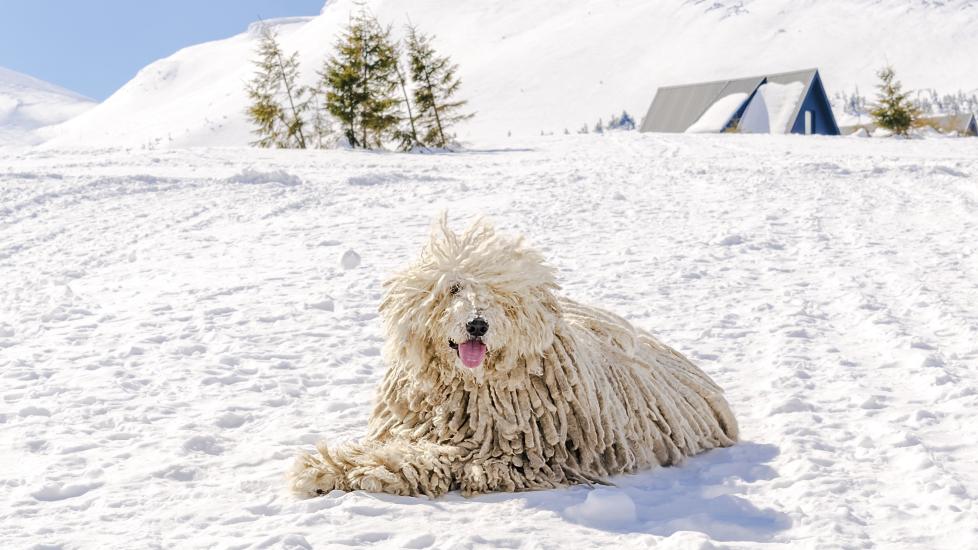Introduction: The Komondor is an ancient Hungarian livestock guardian known for its distinctive corded coat that looks like a mop on legs. These dogs are intelligent, independent, and fiercely loyal companions.
Lifespan: 10-12 years
Coat Length: Corded (long)
Alias(es): Covered with dreadlocks or cords
Height: Males typically stand at around 30 inches (76 cm) at the shoulder, while females may be slightly smaller.
Place of Origin: Hungary
Body Size: Large; males can weigh up to 145 pounds (66 kg), with females being somewhat lighter.
Shedding Level: Low; due to their unique corded coat, they do not shed hair as much as other breeds, but regular maintenance is required to keep the cords clean and free from mats.
Trainability: Intelligent but independent, training requires patience, consistency, and positive reinforcement methods. They respond well to firm leadership.
Additional Characteristics/Trivia:
– Komondors were originally bred to protect large flocks of sheep from wolves and other predators.
– Their corded coats act as insulation against weather extremes and provide protection from attacks.
– Socialization is crucial since these dogs have strong protective instincts and can be wary of strangers without proper introduction.
Care Requirements:
– Grooming: Regular combing to maintain the integrity of the cords and prevent matting. Bathing should also be done carefully to avoid damaging the coat structure.
– Exercise: Daily exercise is necessary to keep them physically fit and mentally stimulated. Lively activities such as long walks, jogging, or even agility courses suit this active breed.
– Diet: A high-quality diet appropriate for their size and activity level is essential. It should be rich in protein to support their muscular build.
– Living Environment: They thrive in rural areas where they have plenty of space to roam and fulfill their natural guarding instinct. Fenced yards are recommended to ensure their safety and containment.
Health Considerations:
– Hip dysplasia
– Elbow dysplasia
– Eye problems (such as progressive retinal atrophy)
– Allergies
– Skin infections (related to moisture trapped by the cords if grooming is neglected)
By providing comprehensive details about each dog breed, you equip prospective owners with the knowledge needed to make informed decisions when selecting a new furry friend.
